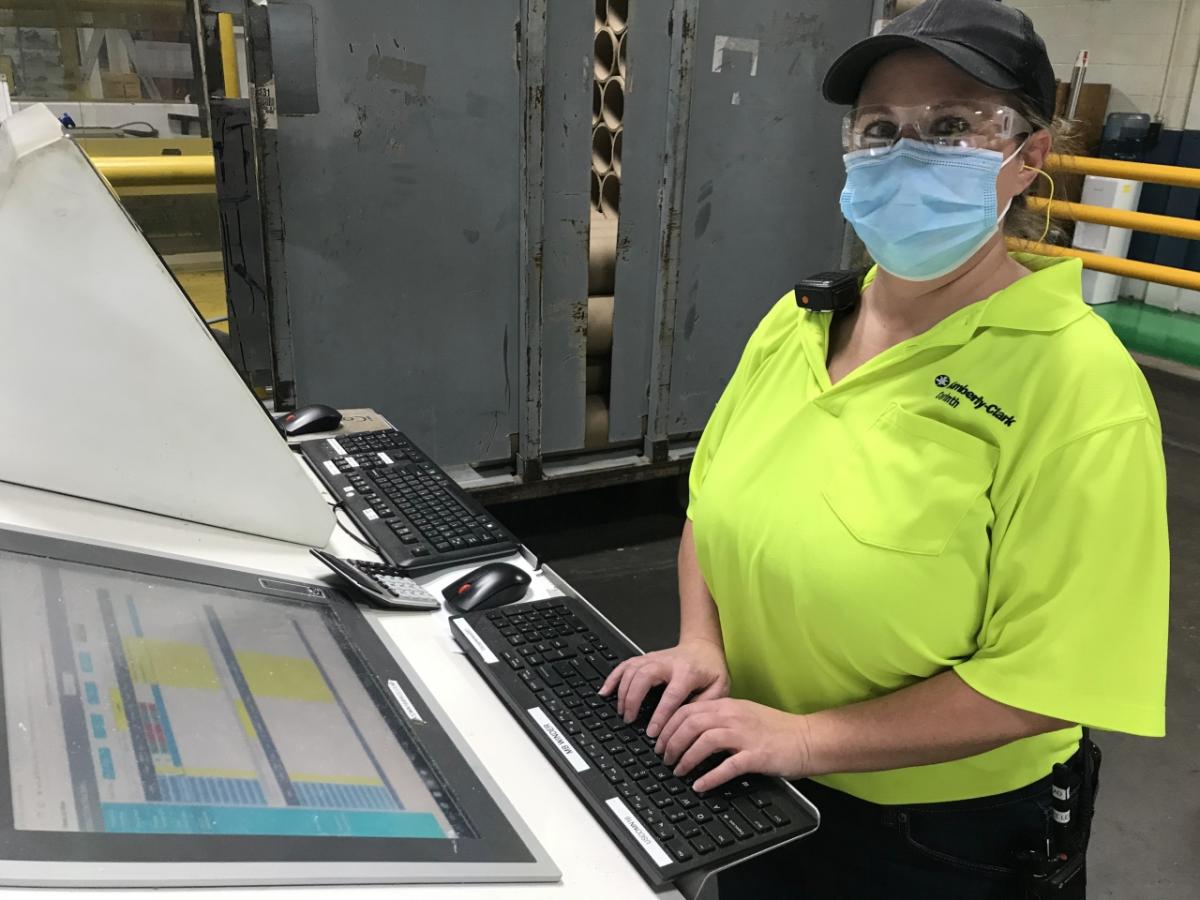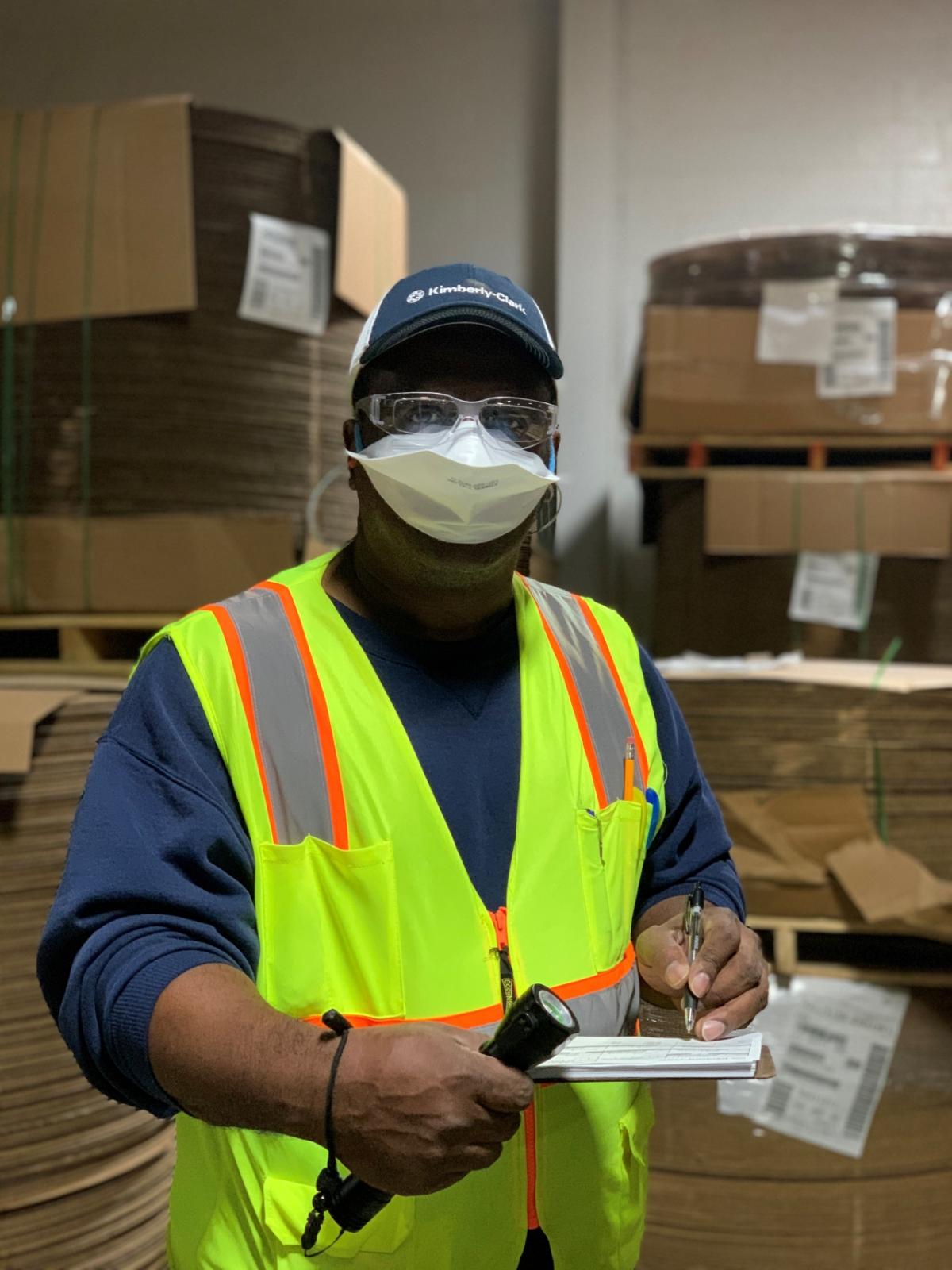Can We Talk?
Keeping Employees Safe through Candid Conversations
“You're not going to like what I have to say, but you need to know this.”
For some people, these words may be an unwelcome forewarning. But for Josh Horton, they’re a sign that things are right on track. As an environment, health and safety (EHS) leader at Kimberly-Clark’s Corinth manufacturing facility in Mississippi, Horton is responsible for the safety and well-being of the facility’s 320 employees, and a key indicator of success is seeing employees empowered to voice their concerns if they detect a potential safety risk. This empowerment is an inherent part of Kimberly-Clark’s purpose of Better Care for a Better World.
Caring for the Community, and Each Other
Kimberly-Clark’s caring value encourages employees to care not only for each other but also for the communities where they live and work. In addition, it encourages them to speak up and own their actions. This culture is critical when it comes to keeping everyone safe.
While safety risk at some workplaces may not be a 24/7 concern, Kimberly-Clark’s culture is centered on high safety standards, where any injury – regardless of the severity – is unacceptable.
Achieving zero safety incidents is an ambitious goal, but earlier this year, Kimberly-Clark’s Corinth facility again made it a reality as the facility celebrated 1 million injury-free hours over three consecutive years.
“We had talked about safety nonstop over the years, but you need a breakthrough to achieve this level of safe hours,” said Vince Overholt, the Corinth facility manager.
A lot of teamwork and a commitment to continuous improvement led to this achievement, Overholt emphasized, and its maintenance requires ongoing attention and focus every day.
Path to Safety: Action and Transparency
To improve safety performance across the company, Kimberly-Clark’s EHS team launched a transformational framework to support its manufacturing and distribution facilities.
Launched in late 2018, this framework provided a maturity roadmap designed to address three core objectives: 1) improve leader and employee mindsets, behaviors, and capabilities; 2) reduce risk and risk tolerance; and 3) enable effective management systems to facilitate continuous improvement while engaging the broader workforce.
When the EHS team put out the call for sites to test and refine the model, the Corinth team jumped at the opportunity to take its safety performance to the next level.
“We embraced this approach to EHS and wanted to make a lasting impact,” said Horton, who, according to Overholt, “eats, sleeps, and breathes safety transformation.”
The Corinth facility underwent a cultural overhaul with activities meant to increase transparency and engagement. They enhanced safety escalation reporting so employees could voice any concerns, frustrations, or capability issues, and they allocated the resources needed to address those issues – not just as a quick fix but for the long term.
“We knew that we needed to have tenacity, not just by sticking with the process but by truly living the transformation,” Horton explained. “To increase employee engagement, we held hazard recognition exercises known as ‘safety blitzes’ and created tactical improvement plans using safety data from near misses.”
Leaders also held facility-wide compliance audits by dividing the group into three auditing teams to generate the most engagement possible. The linchpin, however, was their work around transparency.
“We took near-miss reporting to a new level by cultivating a culture where people are comfortable telling us, ‘I made a mistake and I want to fix it,’ or ‘You’re not going to like what I have to say,’” said Horton. “That’s how I know the cultural shift is working.”
Connecting to Their Personal Safety “Why”
While they’re proud of their injury-free success so far, both Horton and Overholt know that safety is an ongoing journey. And for both men, the purpose of that journey is to go home to their families at the end of each day and ensure that all Kimberly-Clark employees can do the same.
“We want every employee to connect to the ‘why’ behind safety. Why does safety matter to me? Once you define that for yourself, there’s no looking back,” Overholt said. “We all understand that we’re just one bad decision away – a golden millisecond decision that could result in someone not going home to their family – and we must keep that top of mind at all times.”
“Our culture of caring compels us to be diligent about identifying and mitigating risks, and each countermeasure will help advance our safety culture and our journey,” Horton added. “What am I most proud of? Care is at the heart of everything we do.”



